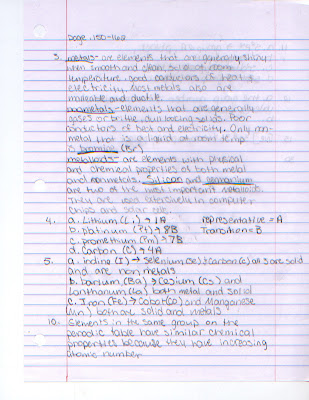 |
| Pre-Lab Questions |
For this lab we had to conduct a Pre-Lab:
Which is to the left.Materials:
The materials we had during this lab is a crucible, a shiny pice of Mg, clay triangle ring and aBunsen burner
Procedure:
First off we put our triangle ring 7cm above the Bunsen burner and then placed the crucible inside the triangle. Then we measured out 25cm of Mg. After that we placed the crucible with the Mg over the flame and waited until we say a spark. Then we placed our Mg inside a beaker with 10ml of water.
Data:
 |
Analysis Questions.
1. With this lab light energy was conducted. This happened when the Mg was heated and sparked.
2. When Mg is reacting with are it changes colors to a blackish color. Anytime you have Mg out in the open it will react.
3. Magnesium oxide and Magnesium nitrate
4. Magnesium and oxygen because our mixture consisted of a white product.
5. The Magnesium compound was conductive but it wasn't a high level of conductivity.







